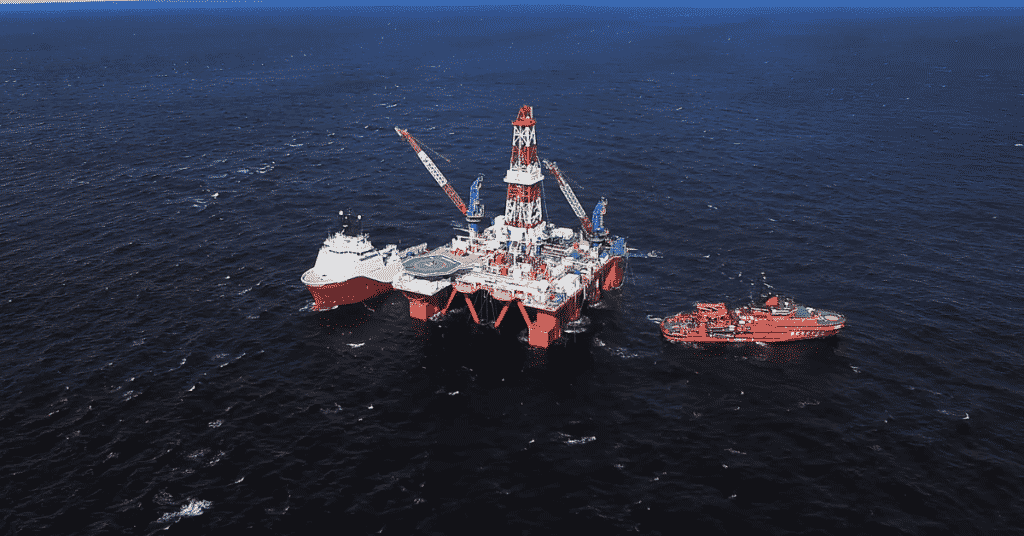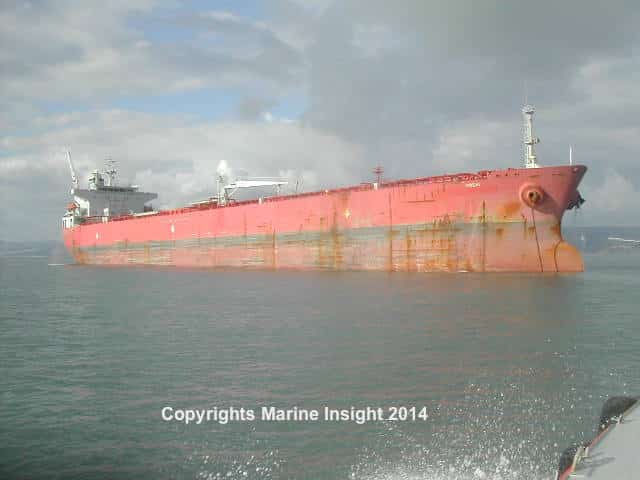The 5 Submersibles Built To Reach the Ocean’s Deepest Trenches
The Hadal Zone is the deepest part of the ocean and home to the world’s deepest trenches, which are the least explored. These extreme marine ecosystems have low temperatures, almost no sunlight, are nutrient-deficient, and have pressures exceeding 16,000 pounds per square inch, equal to balancing 50 jumbo jets on a human thumb! While 12 people have walked on the moon, just 3 have ever been to this zone.
Only a handful of submersibles have been designed to reach these tremendous depths, and just 3 have reached the Challenger Deep, around 10,935 m, in the Mariana Trench, the deepest point on earth.
These submersibles have been built with special steel and titanium to withstand the oceanic pressure.
Mentioned below are 5 such submersibles.
1. Trieste
This was the first submersible to reach the deepest parts of the ocean in 1960. However, before focusing on the great feat, let us know a bit more about its design.
Trieste was the brainchild of Swiss Scientist Auguste Piccard, who designed it like one of his earlier bathyscapes, called FNRS-2.
It was constructed in Italy and launched in 1953, getting its name from the Free Territory of Trieste, where a part of it was manufactured.
The submersible’s main hull contained 22,000 gallons of gasoline since it is lighter than water and almost incompressible, making it perfect for extreme depths.

The crew sphere or cabin hung from the main hull, which kept the crew untouched from the cruising pressure outside. It also had ballast hoppers with iron shot and water tanks, which could be flooded.
The Trieste was bought by the U.S Navy in 1958 to reach the Challenger Deep. The $250,000 submersible made its plunge to the deepest point on January 23, 1960. Jacques Piccard, a Swiss oceanographer and also the son of the designer, along with U.S Navy Lieutenant Don Walsh, reached a recorded depth of 10,916 m.
The descent took 4 hours and 47 minutes, and the duo spent 20 minutes on the ocean floor before making their 3-hour ascent. This was a breakthrough moment for oceanographic science and naval technology, showing humans could reach the deepest depths of the planet.
2. Deepsea Challenger
This submersible, shaped like a torpedo, was designed by Australian engineers and took filmmaker James Cameron to the depths while he sat in a cramped, fetal position throughout the journey, as the cabin was a thick steel sphere, just over a metre wide.
Its body was made of syntactic foam, which does not compress even under extreme pressure. Since the foam body was oriented vertically, the submersible did not swim forward; rather, it glided straight down like an arrow and moved side-to-side on the seafloor.
Heavy iron weights attached to it took the submersible down, while during the ascent, the pilot simply released the weights, and the green foam shot it up naturally.

The historic dive was on March 26, 2012, when James Cameron piloted the submersible into the Challenger Deep. He took just 2 hours and 36 minutes to reach the bottom, at a recorded depth of 10,908 m, making him the 3rd person ever to reach the deepest point on earth and the first to do it alone.
Cameron spent three hours on the trench’s floor, collecting many biological samples, and most importantly, 3D video footage, allowing humanity to view the amazing spectacle.
A malfunction led to the loss of the robotic arm, which cut his time short, and he had to ascend earlier than planned, taking him only 90 minutes to reach the water surface.
3. DSV Limiting Factor
Also called the Triton 36000/2, this submersible was commissioned and funded by explorer Victor Vescovo for the 2018-19 Five Deeps Expedition, which was a mission to reach the deepest point in all 5 of the world’s oceans.
The submersible was built by Triton Submarines and has a spherical hull made from thick titanium alloy. It can accommodate 2 people and is the only commercially certified HOV rated for Full Ocean Depth of 11,000 m.
It is powered by lithium batteries and has 10 electric thrusters for movement.
This submersible allowed Vescovo to become the only person to reach the deepest point in all 5 oceans.

In the Atlantic, he reached the Puerto Rico Trench, touching a depth of 8,376 m. In the Southern Ocean, he dived to the South Sandwich Trench at a depth of 7434 m.
He successfully explored the Indian Ocean’s Java Trench, the Pacific Ocean’s Challenger Deep and the Arctic’s Molloy Deep at the depths of 7192 m, 10,925 m and 5550 m, respectively.
His dive to the Challenger Deep broke the previous manned depth record, though by a small margin.
The submersible operates through a support ship, the DSSV Pressure Drop, which maps the seabed and deploys unmanned Lander vehicles for scientific data collection.
4. Fendouzhe
This is China’s domestically produced deep-sea manned submersible designed for scientific research.
Operated by the Chinese Academy of Sciences, it can accommodate three people and dive to a depth of 11,000 meters.
The Fendouzhe features two robotic arms with a lifting capacity exceeding 60 kg, designed for deep-sea tasks such as sample collection and exploration.

It also features a modern acoustic system allowing it to constantly communicate via text, voice and images from the seabed to its mother ship, the R/V Tansuo-1 (Exploration-1).
The Fendouzhe took several sea trials and expeditions in the Pacific Ocean. In 2020, it completed 13 dives to the Mariana Trench, 8 of which exceeded 10,000 m.
On November 10, 2020, it set a new national record for a manned submersible when it reached 10,909 m in the Challenger Deep.
Commissioned in 2021, the submersible has been a part of many operations, including the first international joint deep-sea research expedition in 2023 and also expeditions in Indian Ocean trenches such as the Diamantina Abyss.
5. HOV Jiaolong
Jiaolong, meaning Sea Dragon, set the stage for its successor, Fendouzhe. However, while the four submersibles mentioned above reached the deepest point on the planet, Jiaolong was made to explore the vast majority of the seabed.
In June 2012, while conducting sea trials in the Mariana Trench, it achieved a maximum dive depth of 7062 m. This means the submersible can explore 99.8% of the seabed.

It can carry 3 people, usually a pilot and two researchers for scientific data collection. The submersible has been pivotal for Chinese missions in the Pacific, Indian and Atlantic Oceans, which have led to the discovery of deep-sea trenches, hydrothermal vents, and other marine structures like polymetallic nodule areas.
It underwent a major upgrade in 2024 and 2025 and is now setting new records for dive efficiency and frequency.
You might also like to read-
- Top 10 Deepest Parts Of The Ocean
- World’s Deepest Marine Test Basin
- 15 Amazing Ocean Documentaries You Must Watch
- Types of Underwater Vehicles and Submarines
Disclaimer :
The information contained in this website is for general information purposes only. While we endeavour to keep the information up to date and correct, we make no representations or warranties of any kind, express or implied, about the completeness, accuracy, reliability, suitability or availability with respect to the website or the information, products, services, or related graphics contained on the website for any purpose. Any reliance you place on such information is therefore strictly at your own risk.
In no event will we be liable for any loss or damage including without limitation, indirect or consequential loss or damage, or any loss or damage whatsoever arising from loss of data or profits arising out of, or in connection with, the use of this website.
Disclaimer :
The information contained in this website is for general information purposes only. While we endeavour to keep the information up to date and correct, we make no representations or warranties of any kind, express or implied, about the completeness, accuracy, reliability, suitability or availability with respect to the website or the information, products, services, or related graphics contained on the website for any purpose. Any reliance you place on such information is therefore strictly at your own risk.
Related Articles
Do you have info to share with us ? Suggest a correction
Subscribe To Our Daily Newsletter
By subscribing, you agree to our Privacy Policy and may receive occasional deal communications; you can unsubscribe anytime.










BE THE FIRST TO COMMENT